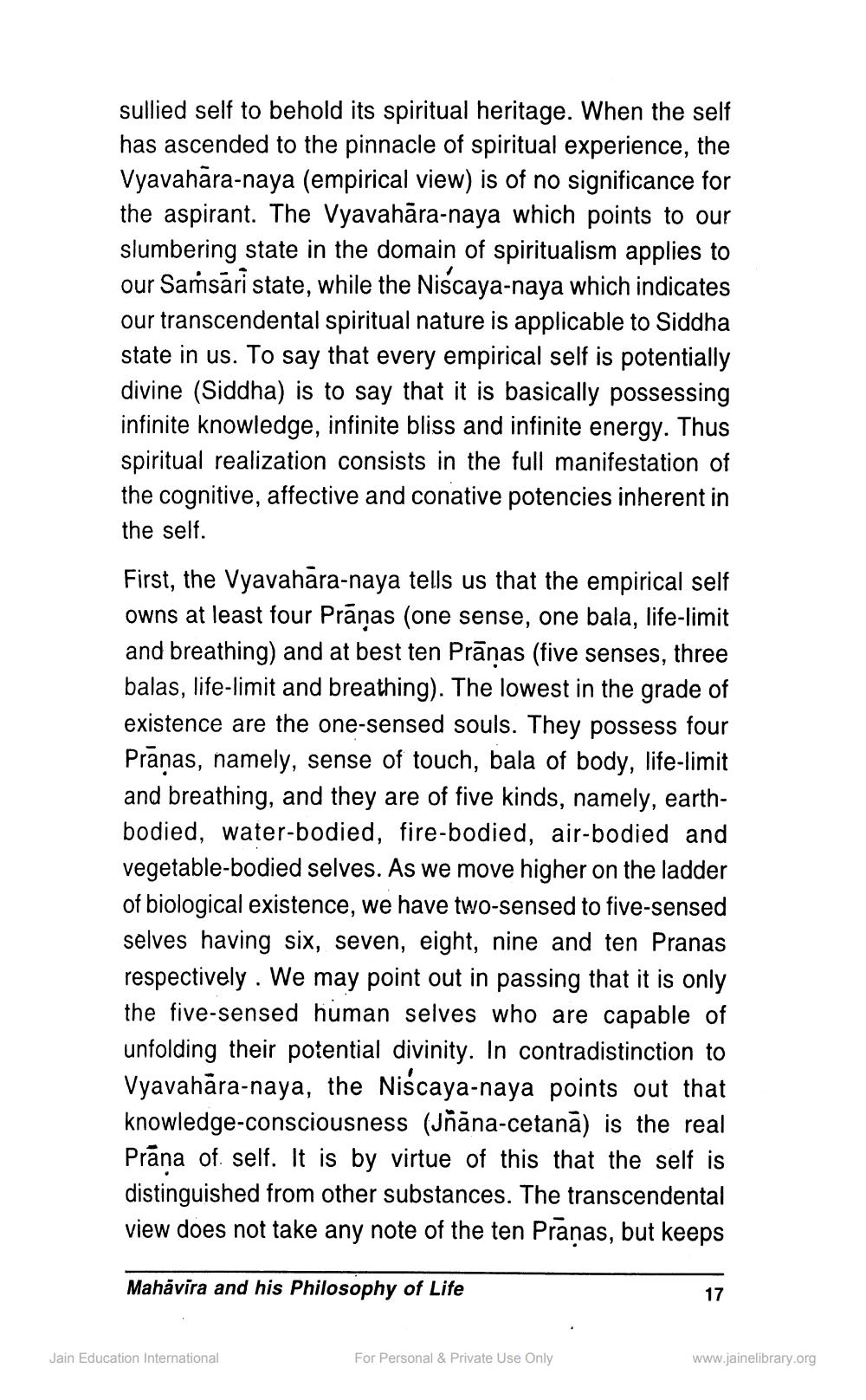________________
sullied self to behold its spiritual heritage. When the self has ascended to the pinnacle of spiritual experience, the Vyavahāra-naya (empirical view) is of no significance for the aspirant. The Vyavahāra-naya which points to our slumbering state in the domain of spiritualism applies to our Sassari state, while the Niscaya-naya which indicates our transcendental spiritual nature is applicable to Siddha state in us. To say that every empirical self is potentially divine (Siddha) is to say that it is basically possessing infinite knowledge, infinite bliss and infinite energy. Thus spiritual realization consists in the full manifestation of the cognitive, affective and conative potencies inherent in the self. First, the Vyavahāra-naya tells us that the empirical self owns at least four Pranas (one sense, one bala, life-limit and breathing) and at best ten Prānas (five senses, three balas, life-limit and breathing). The lowest in the grade of existence are the one-sensed souls. They possess four Prānas, namely, sense of touch, bala of body, life-limit and breathing, and they are of five kinds, namely, earthbodied, water-bodied, fire-bodied, air-bodied and vegetable-bodied selves. As we move higher on the ladder of biological existence, we have two-sensed to five-sensed selves having six, seven, eight, nine and ten Pranas respectively. We may point out in passing that it is only the five-sensed human selves who are capable of unfolding their potential divinity. In contradistinction to Vyavahāra-naya, the Niscaya-naya points out that knowledge-consciousness (Jňāna-cetana) is the real Prāna of self. It is by virtue of this that the self is distinguished from other substances. The transcendental view does not take any note of the ten Pranas, but keeps
Mahavira and his Philosophy of Life
17
Jain Education International
For Personal & Private Use Only
www.jainelibrary.org




